Talking About My Generation



 Worf has discovered an interesting chunk of Wing Commander history in a new book called Generation XBox: How Video Games Invaded Hollywood. The book doesn't discuss FMV games at all, but instead talks about how Hollywood's process for adapting video games into films has changed in the past two decades. It includes several pages on the history of the Wing Commander movie's production deal and apparently interviewed both Chris Roberts and Todd Moyer. Here is the Wing Commander section:
Worf has discovered an interesting chunk of Wing Commander history in a new book called Generation XBox: How Video Games Invaded Hollywood. The book doesn't discuss FMV games at all, but instead talks about how Hollywood's process for adapting video games into films has changed in the past two decades. It includes several pages on the history of the Wing Commander movie's production deal and apparently interviewed both Chris Roberts and Todd Moyer. Here is the Wing Commander section:
A long time ago, in a galaxy not that far away lived a young boy called Chris Roberts. Chris wasn't just a Star Wars fan. He was the kind of Jedi geek who could tell you the difference between a tauntaun and a bantha in torturous detail. Born in California in 1968, he grew up in Manchester, England in the 1970s. When he was eight-years-old, he went to the cinema to see George Lucas's space opera. It changed his life. The moment he got back home he started building X-Wing fighters and Tie-fighters out of his Lego set. "That whole sense of being transported to another world had a big impact on me," he says. "Everything I've done has been about creating worlds that you can escape into."
When he wasn't talking about Tie-Fighters, Roberts was busy tapping away at the red and black keys of his school's BBC Micro computers. He dreamed of making games that could capture the magic of Lucas's universe. If you'd told his younger self that one day he'd be living in California, running his own software company and directing Luke Skywalker - destroyer of the Death Star and the last of the illustrious Jedi Knights, aka actor Mark Hamill - he probably would have shat his pants.
Fast forward to 1990 and Roberts was already achieving all his dreams. He'd been making games since he was 11-years-old but it was only after moving to the US to join Origin Systems that he began work on what would be his magnum opus, the Wing Commander series. A futuristic universe populated by hot stuff fighter pilots, space freighters and feline aliens called the Kilrathi, the Wing Commander games were phenomenally succesful. Each box was emblazoned with the legend "A Chris Roberts game" and the programmer/designer auteur quickly attracted a huge following.
PC gamers were seduced by his space opera franchise and its ambition to tell a story as well as to let you dogfight in outer space. Each new installment raised the narrative stakes, following pilot Christopher Blair as he became a decorated veteran of the Terran-Kilrathi conflict. The universe the games opened up was as intricate as anything Lucas created. It was filled with Arrow fighters, Temblor Bombs, and a weary hero who'd had a bellyful of war.
The Wing Commander world was shaken up in 1994 when Wing Commander III: Heart of the Tiger made the jump to full motion video. No longer would Blair and his fellow pilots be animated sprites. Now they were live actors whose stories played out in cinematic cut-scenes (the dramatic, non-playable sections between game levels). Hamill starred as Blair. John Rhys-Davies and Malcolm McDowell lent thespian weight as Terran Confederation officers. Shoots against green screen allowed the game designers to flesh out a digital sci-fi world around their characters. Roberts suddenly found himself morphing into a filmmaker. Understandably he was terrified, since he'd never even been to film school. "I'd learned everything I knew from watching movies," he says. "But in terms of knowing how to do a master shot, two shot and singles and all the different things you need to know on a technical bsis about how to shoot something and put it together to make the scenes flow, that was pretty intimidating."
Wing Commander III had a $3 million budget for its video shoot. Wing Commander IV: The Price of Freedom, shot on 35mm, had an $8 million budget. Those were not figures to be sniffed at and nor were the sales figures. Wing Commander marked out its turf as one of the bastions of PC gaming in the '90s. While other FMV titles were largely derided, the Wing Commander series managed to create a balance between its live action narrative scenes and the comparatively lo-fi, animated game sequences that let you fly through space. The franchise's loyal fans didn't seem to mind the jarring shift from passively watching FMV to actively shooting sprites. The tremulous FMV drama, where Hamill deals with romances and fallen comrades, gave a much-needed emotional dimension to waht was essentially a spaceship cockpit simulator.
For Roberts as a creator, though, the game portions were losing their appeal. Wing Commander had grown into a huge pulp sci-fi saga and it was outgrowing its videogame format. After EA bought Origin Systems, he started writing a spec screenplay for a movie and put out feelers in Hollywood, uncertain about what would happen but hoping all the same: "It was my passion project, my baby."
When the movie finally happened it was all about th deal. Of course, all movies are essentially about the deal, but Wing Commander was in a class of its own. Producer Todd Moyer put together a financing package so complex it made Maxwell's partial differential equations look like something a toddler might chalk up on their PlaySkool blackboard during the ad breaks in Bear in the Big Blue House.
To be fair, it was a stunning deal - or rather series of deals - that jigsawed together money from all over. It began with a small domestic minimum guarantee from Fox and was followed by a Luxembourg tax incentive, some French investment, an Australian tax shelter, UK financing and foreign sales. In all, the independent production secured a $30 million budget. "At the time it was a tonne of money," says Moyer.
Moyer knew all about exploiting intellectual proeprty across mediums. He'd been an executive vice president at Dark Horse Comics and had arranged a lot of the big movie licensing agreements - comic books like Aliens, Predator and their eventual crossover Aliens Vs. Predator, which would become both a movie and a videogame. He'd headed up Steven Seagal's production company. Plus he'd worked with Van Damme on Time Cop, Pamela Anderson on Barbed Wire and Jamie Lee Curtis on Virus. Like Larry Kasanoff, Moyer had an eye for a potential franchise. Games, he believed, were much like the comic book properties he'd dealt with: they were the foundations on which you could build a movie, using the original intellectual property to show potential investors that there was both a market and a vision capable of sustaining a feature film. Much as with Mortal Kombat, the deal was the bottom line: how much leverage could you get from a property to spin it off into profitable properties in other mediums?
This was the McDonaldization of entertainment at its most naked and it said a lot about the movie industry's approach to adapting games for the big screen. While novels and plays could claim cultural legitimacy, videogames were largely seen as toy-like systems rather than art. In the eyes of Svengali producers like Moyer they were simply brands waiting to be exploited. "I'm not very reverential towards videogame creators," he admits. "Games just don't get me excited." Instead, their value was as intellectual property. "Once you own IP you can carve out very different deals for the creators with that and for a lot of people."
When Moyer heard about Roberts and the Wing Commander series' dominance in the PC market from an agent friend of his, he set up a meeting. "Chris had a pretty bad script, that unfortunately only got a little bit better," the producer remembers. "Basically it was a C-rate Star Wars rip off." Things might have ended there if it weren't for two plusses. It helped, naturally, that the Wing Commander franchise had made millions of dollars. More importantly, Roberts was putting a chunk of equity on the table. He was essentially buying himself a shot at feature film directing. Nothing wrong with that in the movie biz, of course; yet this was the first time a videogame creator had made the leap into making studio distributed movies.
You might think Fox was taking a huge gamble. Here was a young, novice filmmaker stepping up to direct his first movie, an epic space opera with a $30 million price tag. The studio suits must have been worried, right? Wrong. Well then, they must have been swayed by the videogame designer's showreel with all the FMV footage he'd shot on video and 35mm film for the games? Wrong again. Surely when they saw him directing Mark Hamill and Malcolm McDowell they felt reassured? Not at all. In fact, they barely glanced at it.
"No one gave a shit about Chris Roberts as a director or not a director," says Moyer. "All they cared about was that the videogame had huge sales, there was a built-in audience, and they could crunch the numbers. Like many of these movies, at the right price, nobody cars who directs them." With a minimum domestic guarantee from Fox, the filmmakers could basically go off and make whatever movie they wanted. Fox's exposure was so low, they had no interest in keeping tabs. It was a disinterest that would both make and break the Wing Commander movie's fortunes.
For Roberts, stepping into the director’s chair was something of a poisoned chalice. The young Brit, on the usp of his 30th birthday, was about to get a firsthand lesson in how the moviemaking machinery could chew you up and spit you out. At Origin Systems, Roberts had become used to flexing his creative muscles: "In videogame terms I was like a very big film director. I got what I wanted and didn't have to compromise. Then I stepped into the film business and, all of a sudden, I wasn't." On the set of the Wing Commander movie, which was shot in Luxembourg, the big fish from a small pond suddenly found himself in the deep blue sea surrounded my sharks. Unlike Mortal Kombat's John Tobias - who recalled being lauded by cast and crew during a brief visit to the production - Roberts wasn't just passing through. He was now part of the food chain.
It was a tough gig, not the least of all because the game designer's creative instincts as a director were constantly overruled by the economic necessities of the deal. Like Super Mario Bros., Wing Commander was being made as an indie movie. "In my opinion, independent movies that are being produced from franchises like this tend not to be very good. The reason why is because you have to satisfy too many different cooks," says Moyer. "There were all kinds of concessions made in that movie that you wouldn't do if you were making it as a studio movie."
As a part of the deal, Fox wanted Freddie Prinze Jr. and Matthew Lillard, who were hot, in the cast. Sales to the UK, Germany and France were threatened because those markets had never heard of either actor. Moyer added Saffron Burrows and David Suchet for the UK, Jürgen Prochnow for Germany and Tchéky Karyo for France. "You would never do that on a big studio movie. It was all about trying to get a bigger number from those territories," he says.
Wing Commander had one advantage over previous videogame movies: it had a detailed, rich mythology which its directory knew intimately, since he'd designed it himself. Serving as a prequel to the games, the movie follows a young Christopher Blair (played by pretty vacant Prinze Jr.) on his first combat mission against the Kilrathi. It's like a war movie in space: the pilots are like World War I aerial aces, deadly in the cockpit but struggling with human dramas on the ground; the hulking space vessels are like aircraft carriers or the submarine from Das Boot, metal canisters its troops are locked inside while the war wages around them. It's no surprise to lean that Roberts referred his crew to Tora! Tora! Tora! and The Battle of Midway for inspiration.
Visually, the film did a little with a lot. Its CGI team beta-tested Maya, a 3D animation and modeling tool now used extensively in both the movie and game industries, and used it to create quite spectacular space battles. Less convincing were the Kilrathi, cat-like aliens whose design resulted in a blazing row between Roberts and his producer over whether or not they should be CGI. "When you're working with a creator, you can try to be as persuasive as you want," Moyer explains. "Try telling Frank Miller what should be in or out of a property, good fucking luck. It's hard to tell Chris Roberts, who made a tonne of money off Wing Commander, what he has to do with certain characters. You're always going to lose because he can say, 'This is important tot eh core audience, we have to do this to satisfy them'. I was like: 'Dude, people barely remember the videogame it was [so long] ago.'"
Roberts, who'd used animatronics while shooting the cat-like Kilrathi on the Wing Commander games' FMV sequences, was adamant that he wanted the same old school approach. When Moyer refused on the basis that it was "a complete waste of time and would look like shit." Roberts used his own money to pay for the extra work. But the problem was that the Kilrathi - puppeteers in eight-foot suits too tall for the sets that had by now been built - looked ridiculous. "It was laughable and it sucked," says Moyer. "You had a villain that was funny." In the end, the Kilrathi all but vanished from the finished cut of the movie. Roberts asked Fox for more time and money to fix the problem but the studio refused.
What finally killed Wing Commander's box office chances, however, was its chief inspiration: Star Wars. Arriving in cinemas in March 1999 just a couple of months before the long-awaited prequel Star Wars: Episode I - The Phantom Menace, Wing Commander inevitably suffered. The movie's core demographic were eager for Lucas, not Roberts. No sci-fi outing could compete against such fevered expectations not even, it turned out, The Phantom Menace itself. "Everyone had this belief that The Phantom Menace was going to be like the Second Coming of Jesus Christ," says Roberts philosophically. "Then after it came out they said, 'It's got Jar-Jar Binks in it, it isn't that good'."
Yet the real damage to Wing Commander was actually done in the meeting rooms at the studio that distributed it. Again, it was all down to the deal. Fox, who were releasing The Phantom Menace and Wing Commander, were obviously going to put all their bets on just one of those two horses. "Fox was not very supportive of the movie," recalls Moyer. "We talked about P&A [prints and advertising] and the screen commitment and they basically wouldn't come up with a satisfactory plan."
Convinced Wing Commander could make money if handled properly, Moyer made a deal where he could sell the movie to another studio as long as Fox got a $2 million profit on their initial investment. Much to Fox's surprise, the producer secured an agreement from Sony who were willing to put the film out on 2,500 screens with a big P&A commitment. They were also willing to invest in the movie and push back its release date, giving Roberts the chance to fix the Kilrathi. Everybody, even Fox with a guaranteed $2 million profit, would be happy. But then all hell broke loos. While Moyer was in the middle of finishing off negotiations with Sony, his cell-phone rang. It was Tom Sherack, then head of distribution for Fox. He had bad news.
"Todd, I'm not giving you the picture."
"But we had a deal. I'm here closing the sale."
"Good fucking luck, I'll never sign the papers. I don't give a shit, I'm not doing it. If you want to have a huge lawsuit, go ahead."
"Tom, I've got to tell you..."
"No, it's coming out in six weeks and it's going to have Star Wars: The Phantom Menace trailer on it.
He hung up.
Six weeks was barely enough time to market Wing Commander properly even if Fox had wanted to. But apparently they didn't. There was no theatrical trailer, no press build up, no TV campaign. The movie was dumped in cinemas in mid-March, an expensive hook to hang the second trailer for Star Wars: The Phantom Menace on.
Moyer, convinced that Wing Commander could easily have done $10 to $15 million on its opening weekend, was furious. The film took around $5 million, putting it fourth out of five movies that opened that weekend. It was also a critical flop. "Star Bores," joked Entertainment Weekly. In retrospect, Moyer is sanguine about the movie's release. "That's the way the business works," he reflects. "Really it's pretty funny: the fact that it was a C-rate Star Wars was actually our undoing." Although Wing Commander's release was far from triumphant, the deal was strong enough to bear it. "I don't think anyone lost money on that movie," he says. "When you run it through the cycles [theatrical, DVD, TV] Wing Commander did just fine. The only people who didn't make money on it were Chris Roberts and me."
For Roberts, who'd been attracting a lot of industry heat as a young director before the film’s release (Fox offered him a mooted Silver Surfer project), the movie was a mixed blessing. Despite the compromises, he'd directed a feature before turning 30 and taken his baby onto the big screen. "It was like a very expensive film school for me," he says. After a brief return to videogames he started out as a Hollywood producer, making films like Lord of War (2005) starring Nicholas Cage and Lucky Number Slevin (2006) with Josh Hartnett and Bruce WIllis. No videogame designer had ever made such a jump into producing Hollywood movies before.
Wing Commander's genesis, production and release say a lot about the state of things in 1999. Here were the realities behind the videogame movies laid bare: the original videogame properties guaranteed brand recognition with a built-in audience; the funding was drummed up in piecemeal fashion; but studios were willing to distribute without committing themselves to developing the projects in-house. These projects were, in short, a way of milking a franchise from another medium. Hardly surprising, then, that videogame movies would be plagued by mediocrity.

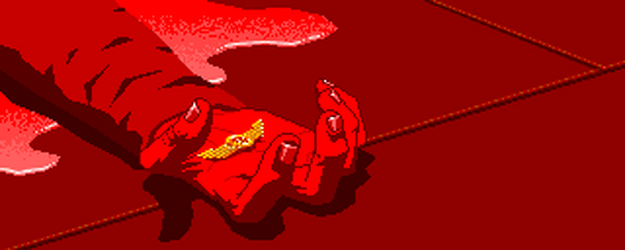



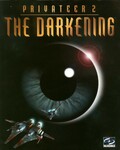

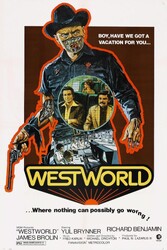
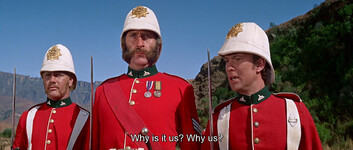

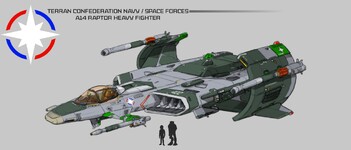
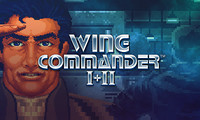



Follow or Contact Us